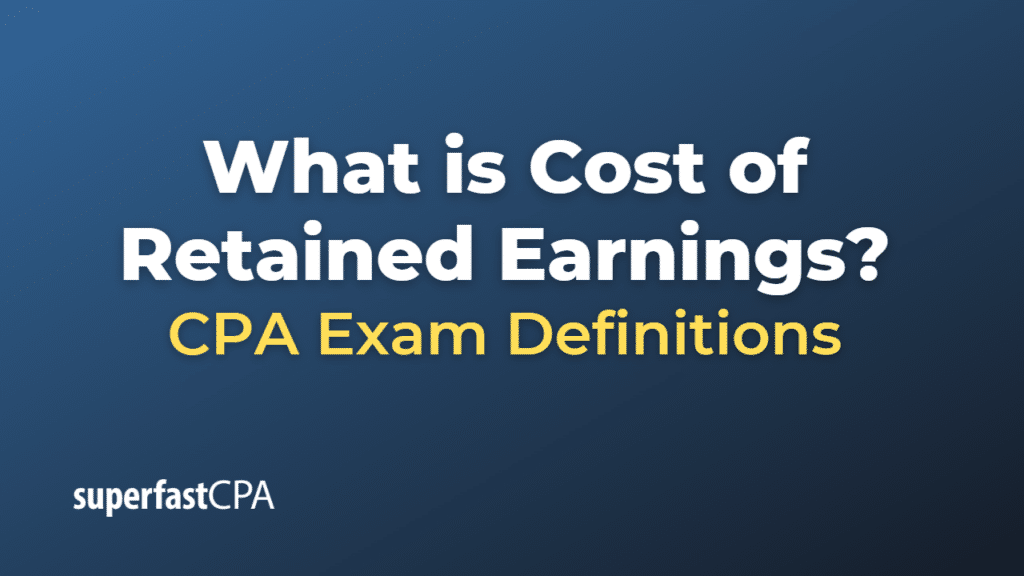Cost of Retained Earnings
The cost of retained earnings refers to the cost associated with a company financing new projects or investments using its retained earnings, rather than raising new equity or taking on debt. Retained earnings are the portion of a company’s profits that are not distributed as dividends but are kept by the company to reinvest in its core business or to pay off its debts.
The cost of retained earnings is essentially an opportunity cost, representing the return shareholders could have earned if they had received the retained earnings as dividends and invested them elsewhere. It’s also seen as the return shareholders expect for the reinvestment of earnings back into the company.
While the cost of retained earnings is not a direct cost that the company pays in the same way it might pay interest on debt, it’s an important concept in corporate finance because it helps companies understand the expectations of their shareholders and can guide decisions about whether to retain earnings or distribute them as dividends.
It’s usually calculated using the following formula:
\(\text{Cost of Retained Earnings} = (\frac{\text{Next Year’s Dividends per Share}}{\text{Current Market Price per Share}}) + \text{Growth Rate of Dividends} \)
This formula is based on the Gordon Growth Model, which assumes dividends grow at a constant rate. Here, “Next Year’s Dividends per Share” is the dividend expected to be paid next year, “Current market price per Share” is the current market price of the stock, and “Growth Rate of Dividends” is the expected constant growth rate for dividends.
Example of Cost of Retained Earnings
Let’s consider a hypothetical example:
Let’s say Company ABC’s current stock price is $50 per share. The company is expected to pay dividends of $2 per share next year, and the dividends are expected to grow at a rate of 4% per year indefinitely.
We can calculate the cost of retained earnings using the formula:
\(\text{Cost of Retained Earnings} = (\frac{\text{Next Year’s Dividends per Share}}{\text{Current Market Price per Share}}) + \text{Growth Rate of Dividends} \)
Substituting the values:
\(\text{Cost of Retained Earnings} = (\frac{\$2}{\$50}) + 0.04 \)
\(\text{Cost of Retained Earnings} = 0.04 + 0.04 = \text{0.08 or 8%} \)
So, the cost of retained earnings for Company ABC is 8%. This means that by reinvesting its earnings, the company is expected to generate an 8% return for its shareholders, as this is the return shareholders could potentially earn if they received the retained earnings as dividends and invested them elsewhere.
This cost of retained earnings can then be used as part of the company’s calculations when determining its weighted average cost of capital (WACC), which is used to evaluate potential investment opportunities.













